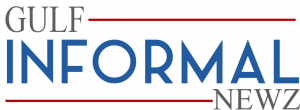Natural Architectural Heritage Centre helps revive interest in old craft
Abu Dhabi
Abu Dhabi: The Arabian Peninsula maintains wonderful evidence of mud-built cities and towns, such as Diriyah and Sados in the Riyadh region, the city of Hofuf in Al Ahsa, the city of Al Ula, and the town of experts in Qassim, as well as in Najran, Hail, Tema and other villages and towns across Saudi Arabia.
Also Read: CBSE, Fit India Plan Live Session With Shilpa Shetty For Students On Yoga Day
The preservation of the mud houses in their original form arises from the need to promote tourism, Saudi media reported.
The National Architectural Heritage Center is making great efforts to revive the mud building and heritage activities and forums have helped revive interest in the old craft, especially with setting up a number of training courses to teach young people the almost extinct profession. Skilled Saudi youths are now taking part in restoration projects currently taking place across the Kingdom, Al Jazirah newspaper reported.
Mud is one of the oldest building materials known to man in the Arabian Peninsula, thousands of years ago, and mud-building shows the ability of a person to adapt to the surroundings in which he lives, and to use his talents to find simple and diverse techniques that meet his needs in the home.
Hundreds of old mud houses across Saudi Arabia have become tourist attractions because they reflect the history and culture of Saudi Arabia and its people.
One of these is the Al An Palace and the historic Emarah Palace, which has 60 rooms and a mosque with a well in the center of its courtyard. A wall with four towers surrounds the edifice.
The seven-story Al Sadran Palace, located in Al Sadran village, is 1,803 years old and old mud houses and palaces in Diriyah were renovated.
Natural Riyadh stone, which is like a marble slab, has been used at the Al Tuwaiq Palace and the Cultural Center.
Riyadh stone is also used in private residential buildings in Diriyah, the Durrat Al Riyadh housing project (near the Sultan bin Abdulaziz Humanitarian City) and other districts in the Saudi capital.
The Saudi Commission for Tourism and Antiquities, has encouraged local residents to adhere to their architectural heritage which bridges the region’s past with the present.
The materials used in the construction of the mud houses were stones, clay and timber designed in different shapes. Some houses were rectangular and lofty while others have the shape of a vertical tower. Most of them had eight or nine stories.
The construction of the mud houses involves placing stones and drenched clay in a rectangular stone frame. The frames are left to dry for a day in the summer or two to three days in winter.
Construction starts soon after the processing of the stones and clay is completed. A coating of lime is given on the lower part of the edifice while the roof is made of timber, palm trunks, and leaves and tamarisk or willows.
Lime is used mainly for the firmness of the pillars of the house and also to add elegance to the muddy color of the coating at the lower part of the house.
The rooms also contain some additional fixtures such as apertures to keep lamps or books.



